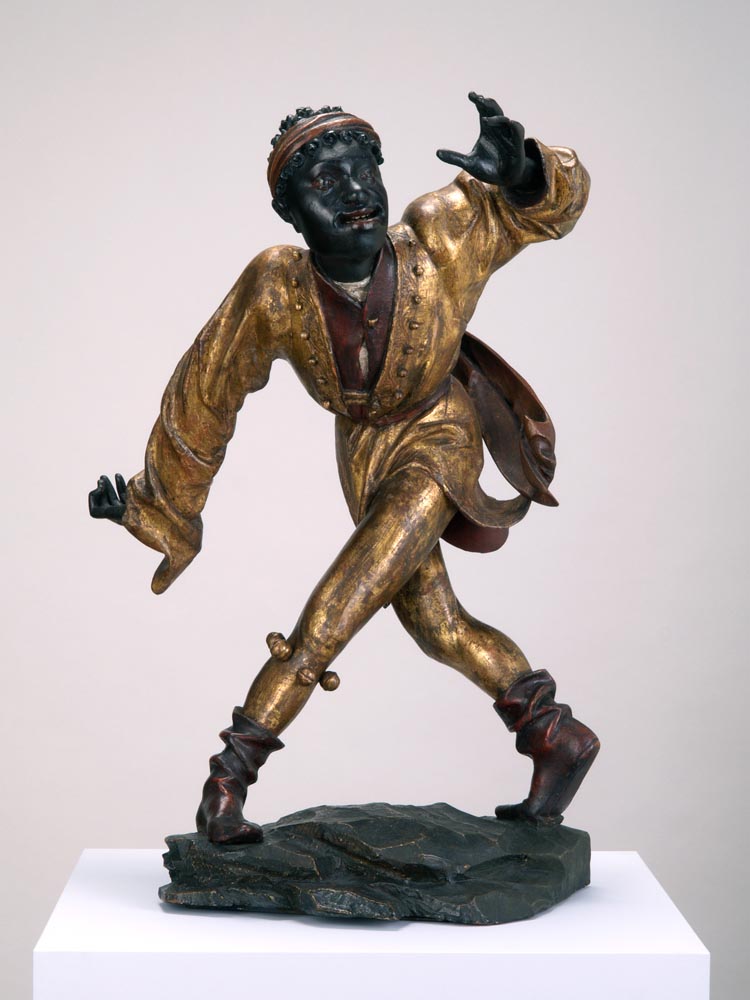In 1480 Erasmus Grasser delivered a series of sixteen “moresca dancers” to his patron Duke Albrecht IV of Bavaria. The Duke sought to enhance his family’s prestige by adorning a grand new ballroom with symbols of his global reach, including celestial figures, coats of arms meant to represent the entire world, and the dancers. The moresca dance was a popular Renaissance dance in which performers would dress in fanciful costumes, often including blackface, and perform comic and acrobatic dance feats. As the name suggests, it originated as a stylized adaptation–and often parody–of dance and musical styles among the “moors” in Muslim Spain and among the African slaves around the Mediterranean. The style was carried around Europe by troupes of traveling performers who entertained at all levels of society, and the form came to take on locally specific features, for example in English “morris dancing.”
Grasser’s figures can be taken as a marker of comic “types” of the era, including exotic figures like a turbaned magician as well as more mundane characters like a tailor. In this context, the inclusion of a “moor” is striking. Grasser’s beautifully carved figure shows us that Black features could be depicted with sensitive detail and without caricature. At the same time, the popularity of the moresca that his dancers represent also points ahead to demeaning depictions of Black figures as figures of fun.
Jeff Bowersox
Deutsch

Source: Erasmus Grasser, Afrikanischer Moriskentänzer („Mohr“) (1480, restored 1928), Munich, Münchner Stadtmuseum Inv.-Nr. K-Ic/222. Photo by P. Fliegauf, D. Jordens-Meintker ©.

A dancing “Moor” (1480) by Jeff Bowersox is licensed under a Creative Commons Attribution-ShareAlike 4.0 International License. Permissions beyond the scope of this license may be available at https://blackcentraleurope.com/who-we-are/.